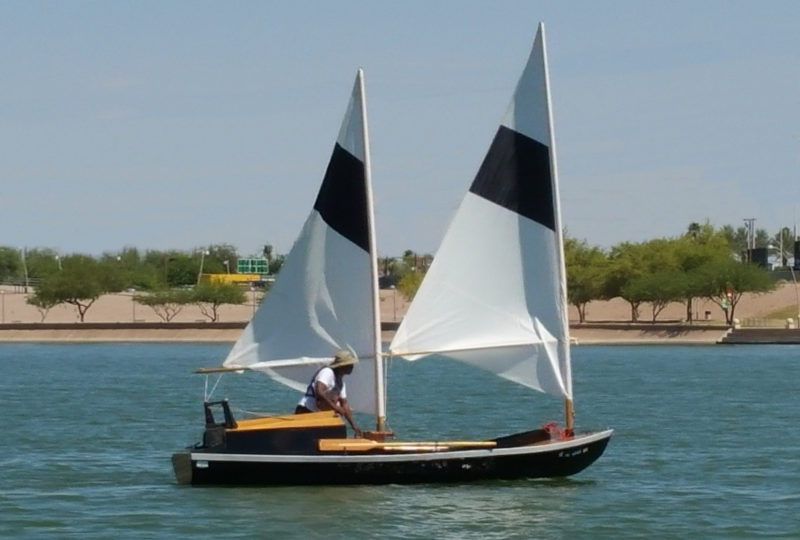 Dilsie V. Morrison
Dilsie V. MorrisonNate was used to sailing a sloop and found that the trimming of the sails on the schooner had more impact on steering than speed.
Nate Morrison wanted a small, easily managed boat that he could use for fishing and sailing during the day and sleep aboard at night. He spent months looking for an affordable used boat that would fit the bill, but came up empty-handed.
Undeterred, he expanded his search to include plans for a boat he could build for himself. It took him several more months to find plans for a boat that would meet his requirement and not exceed his skills. “I was not a woodworker, or any kind of craftsman, for that matter, so building a boat would be a big deal.” His search came to an end when he found the Schooner 18, designed by Fred Shell of Shell Boats.
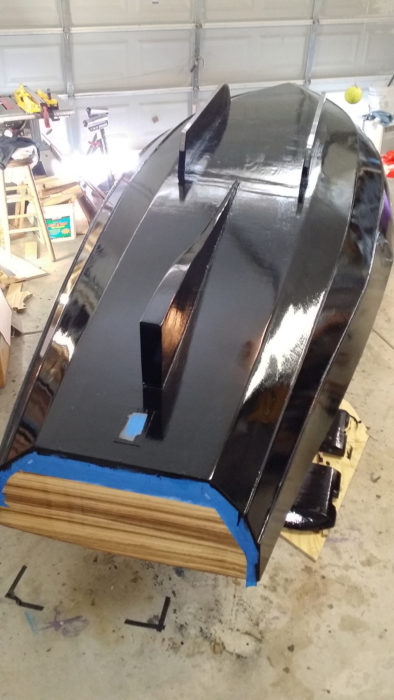 Nate Morrison
Nate MorrisonThe Schooner 18 is designed with sturdy skeg and a pair of bilge keels to give the boat a level stance when pulled up to a beach. The zebrawood transom makes a handsome accent to the painted hull.
Shell describes the 18′ boat as “a luxurious daysailer for two to four, with pretenses of being a basic cruiser for one or two.” The hull has a skeg and a pair of bilge keels, so it sits upright and sails without having to deploy a centerboard or daggerboard. The unstayed masts slip into sleeves in the leg-o’-mutton sails, and the sprit booms are quick to rig and self-vanging. Removing the sprits and rotating the masts to roll up the sails is all it takes to strike them. The Schooner has just three lines to tend to: a single sheet for the foresail and a double sheet for the main. These features met Nate’s requirements for a simple rig. The cabin has a 6’6” sleeping platform that Nate says “works well for one person, but you have to be willing to spoon if there are two of you.”
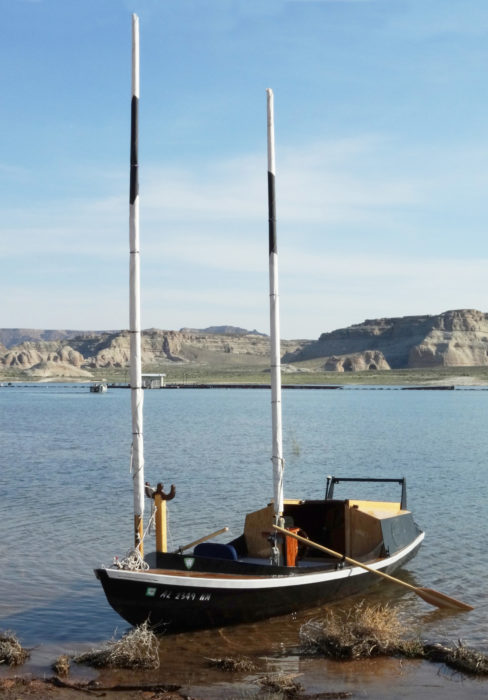 Dilsie V. Morrison
Dilsie V. MorrisonDuring long lulls in the wind, Nate wraps the sails around the rotating masts. The crutch forward and the gallows aft support the rig when it’s taken down.
When Nate taped the plans on the garage wall, he already had a name for the boat he was about to build: BOB, for Boat On a Budget. He was afraid he’d make costly mistakes as he figured out the building process, so he built a trial hull with cheap plywood. He worked out the bugs on a full-sized model when he got everything to fit together properly, he disassembled the trial hull and used the pieces as templates.With his confidence bolstered, he began the glued-lap construction with good plywood.
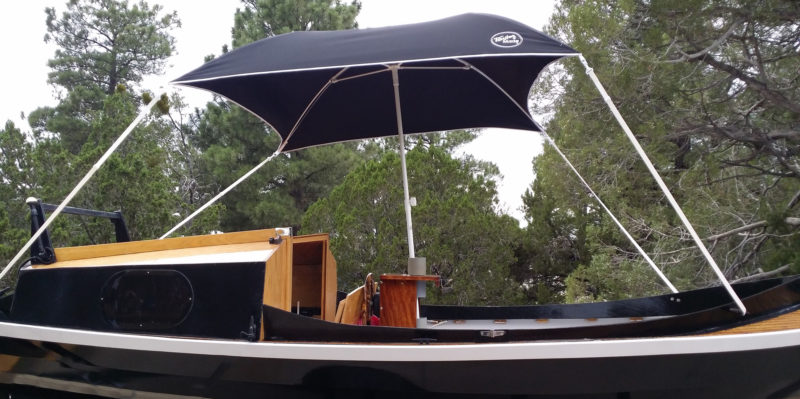 Nate Morrison
Nate MorrisonNate rigged an umbrella for protection from the merciless Arizona sun. This square one with straps on the corners is designed for use on boats.
Nate went shopping for some mahogany for the transom, but at the lumberyard he found a beautiful piece of zebrawood that he “could not live without.” He also prettied up the plywood deck with some vertical-grain Douglas-fir from the deck of a derelict keelboat and trailer he’d been given to salvage.
Nate went the extra mile with his boat’s electrical system. Tucked under the cockpit bench and accessible from the cabin, he has a stereo and amplifier, a solar charge controller, a fuse block, and wiring and controls for a bevy of comforts. Nate’s able to enjoy a stereo and amplifier, LED running lights, speakers that include a subwoofer, a reading light, a cooling fan, and some lighting strips recessed under the deck to give the cockpit a blue glow at night. He modified the rudder to take an electric trolling motor.
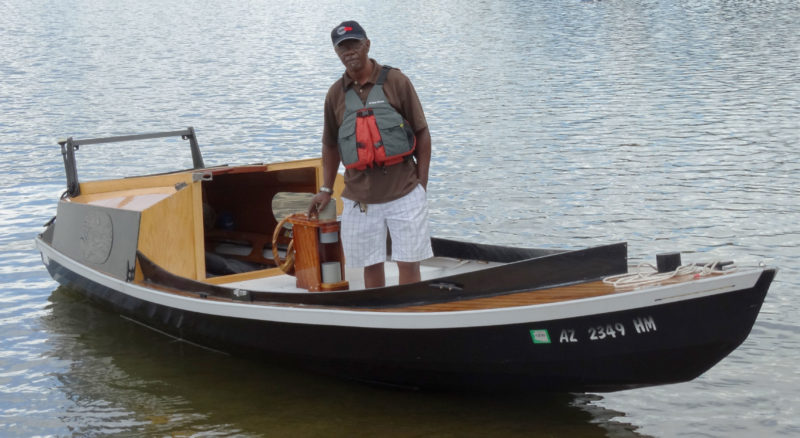 Bill Onley
Bill OnleyWhen there isn’t enough wind for sailing, Nate can leave the sails ashore and head out under power. BOB’s rudder has an electric trolling motor built in.
BOB was a year in the making. Nate had to stop working for two months following open-heart surgery, and during the time he spent recovering he daydreamed about his boat. “It gave me a reason to get well,” he says.
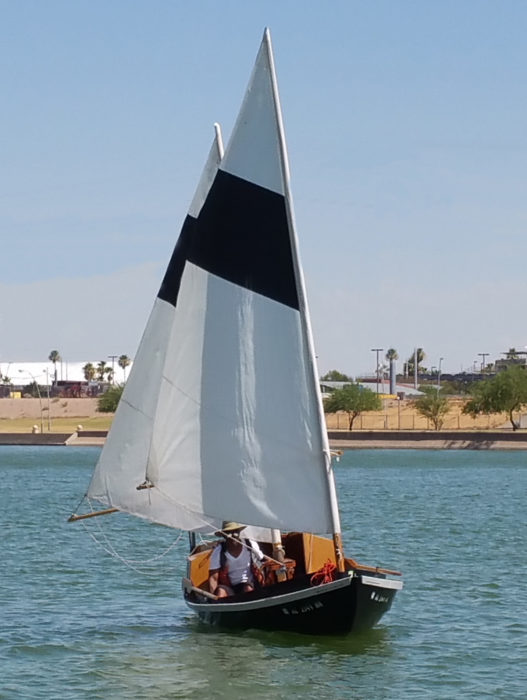 Dilsie V. Morrison
Dilsie V. MorrisonThe winds on the Arizona reservoirs are often light; the boat needs breezes of about 10 mph for the helm to respond well.
He now sails BOB on Arizona’s inland waters, including lakes Pleasant, Powell, Roosevelt, and Patagonia. His little schooner is a fishing boat, a rowboat, and a family picnic boat, and, as Nate puts it, the result of “limited skills, limited tools, and unlimited dreams.”![]()
Have you recently launched a boat? Please email us. We’d like to hear about it and share your story with other Small Boats Monthly readers.
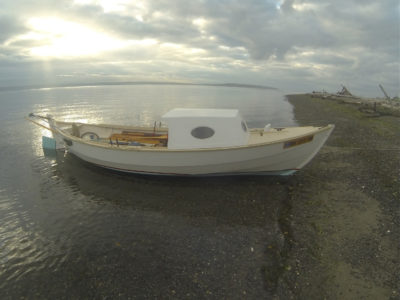

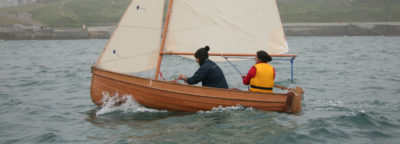
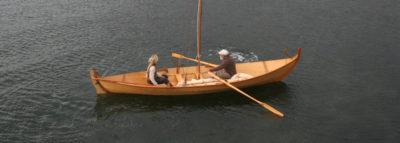
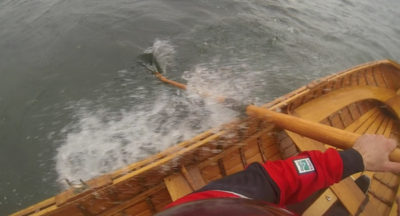
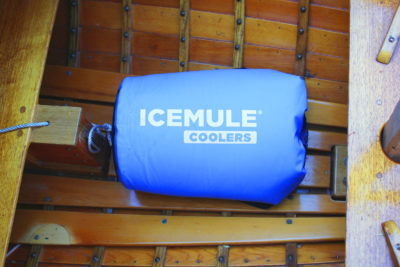
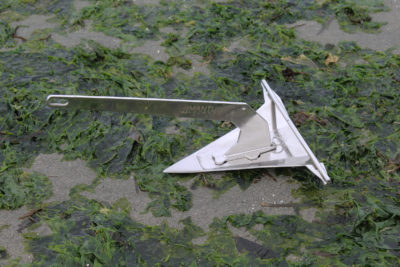
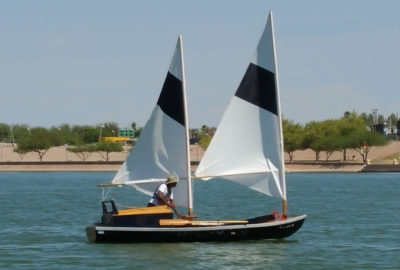
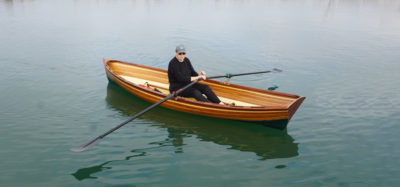
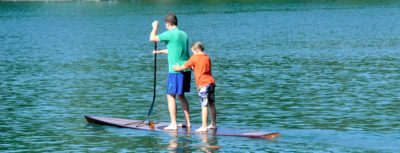
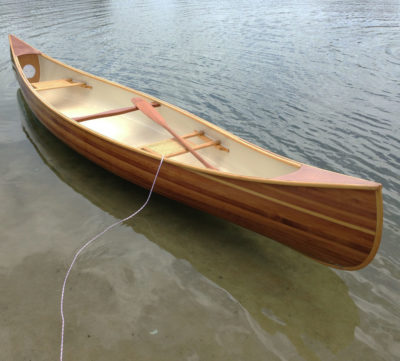
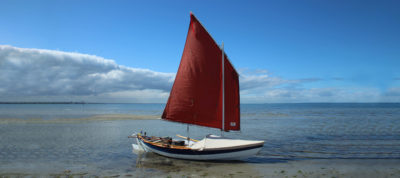
Very nice, Nate! All anyone ever needs. Good luck sailing and with your health as well.
Thank you.
Wonderful Nate, Many wakes….
Thank you
I have built nearly 20 boats (some were rebuilds and or repairs, and I would definitely be proud of your boat, Nate. You did a really good job. I love that you built her first with junk ply and then used those for patterns. I like the look of her. I love boats like this that any person with determination and patience can build themselves. I would like to see photos and a description of the electric motor set up in your rudder. Nice job. Thanks for sharing with us.
Michael, I did learn that there is room for improvement in the rudder design. I’m thinking about making another rudder with more cut out in front and longer below the motor. The cut out would help compensate for the offset of the pivot point of the motor. Making it longer would provide better control in light air.
Nice boat, but wouldn’t it be more properly called a cat-ketch rig? I have always been under the impression a schooner had the taller mast and mainsail aft, and a smaller fore sail up forward. On a ketch, the mainsail is forward, and the smaller sail aft is called the mizzen. A cat ketch is a ketch without any headsails (jib).
The fore mast is 15′ 9″ and the main is 17′ 2″. Normally that would fit the definition of a schooner rig, but masts are interchangeable and I prefer having the taller mast forward because of the way I constructed it. It is taller but lighter and puts less weight forward.
Sweet boat, elegant in its simplicity. I am curious about the umbrella with tie-downs. Who makes it? website?
It’s made by TaylorMade. It’s call the Anchor Shade III and comes in several different colors.
Well done job, Nate. The boat should provide much satisfaction on your relatively sheltered water environment. I happen to be a true believer in bilge keels. They need to be more at an angle to be fully effective when a boat heels under sail, and I would reduce the massive skeg to a smaller one to reduce wetted surface, improve your sailing performance, and still have the boat to sit upright when beached.
Thank you
Although the height of the foremast might suggest a ketch, the fact that the aft sail has a double sheet and the fore a single, would suggest to me that it is a schooner.
Yup, a boat to be proud of, Nate. Could be just what I’m looking for. Couple questions:
What did it cost to build?
How does the cockpit drain if the going gets wet?
Hey, Nate, I like it The front face of the cabin looks like it makes a fine backrest. Looks like the boat fits your needs very well. Nice job.
A beautiful boat, thanks for giving fuel to dreams. One day….
I have a Fred Shell Swifty 12 that I built from plans about 8 years ago. Love it, Fred designs good sailing simple boats, and I’ve looked at the Schooner 18 a few times as well. One thing I love is the lack of standing rigging and how quickly you go from trailer to sailing.
Great job Nate, but as anyone who has built a boat will tell you, you never build just one!
Finally, I see a nice boat with twin leg-o-muttons! I am rigging my Gheenoe classic (15’-4″) with these sails and lee boards and making the 15 hp Evinrude do double duty with a rudder board attached to the motor. I know, it’s a “Clorox bottle” but it fits my time line and gets me on the water! As a retired timber farmer I really want to build a boat, but maybe later!
Not a woodworker or craftsman? I think we can banish that thought.
Good work Nate!
Robert
This is truly an amazing boat and an amazing Nate.
Beautiful boat, Nate! Well done! You might want to look at some of the Phil Bolger designs that use an end plate to improve rudder response. Could be a quick remedy for the steering issue.